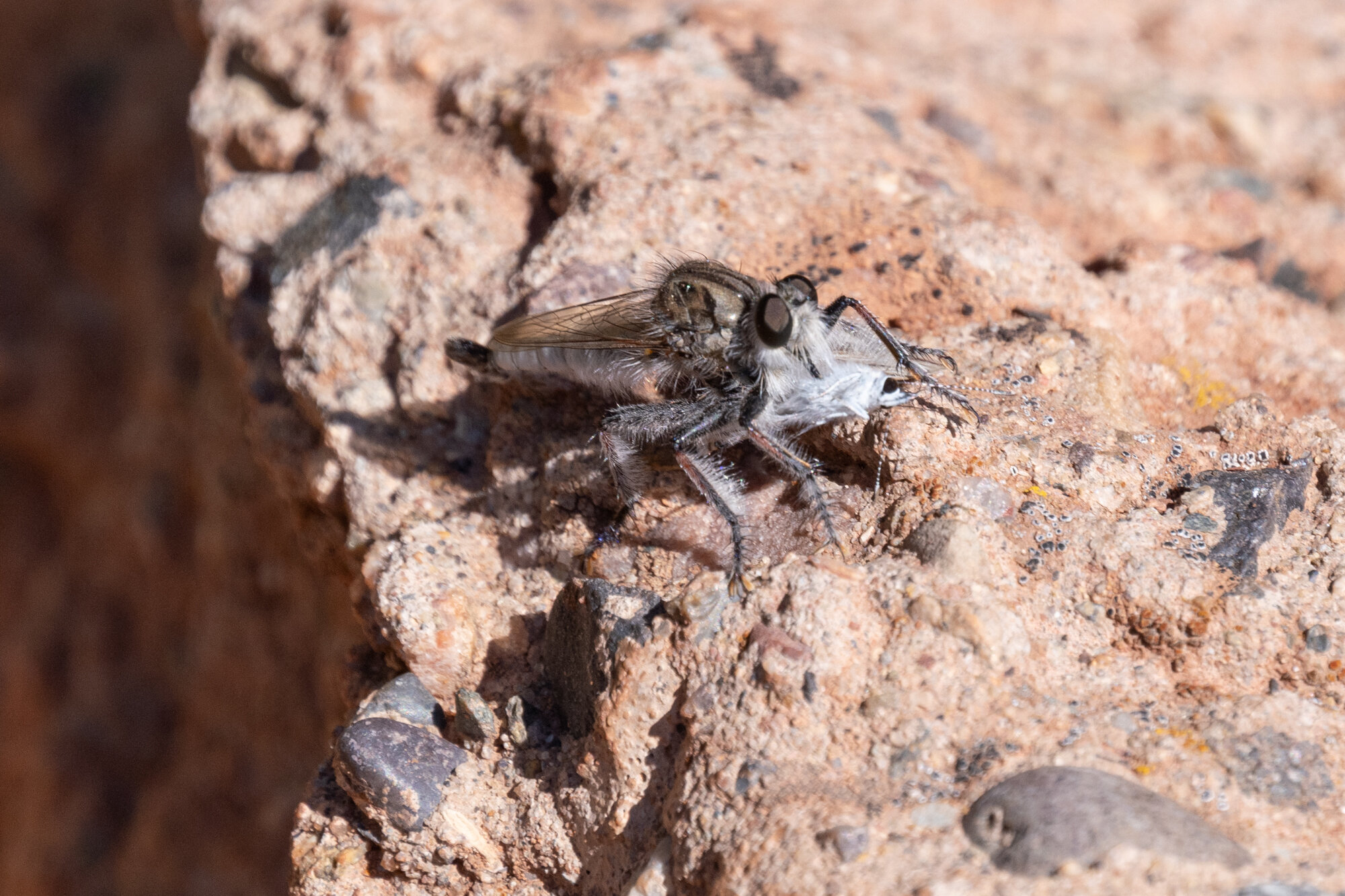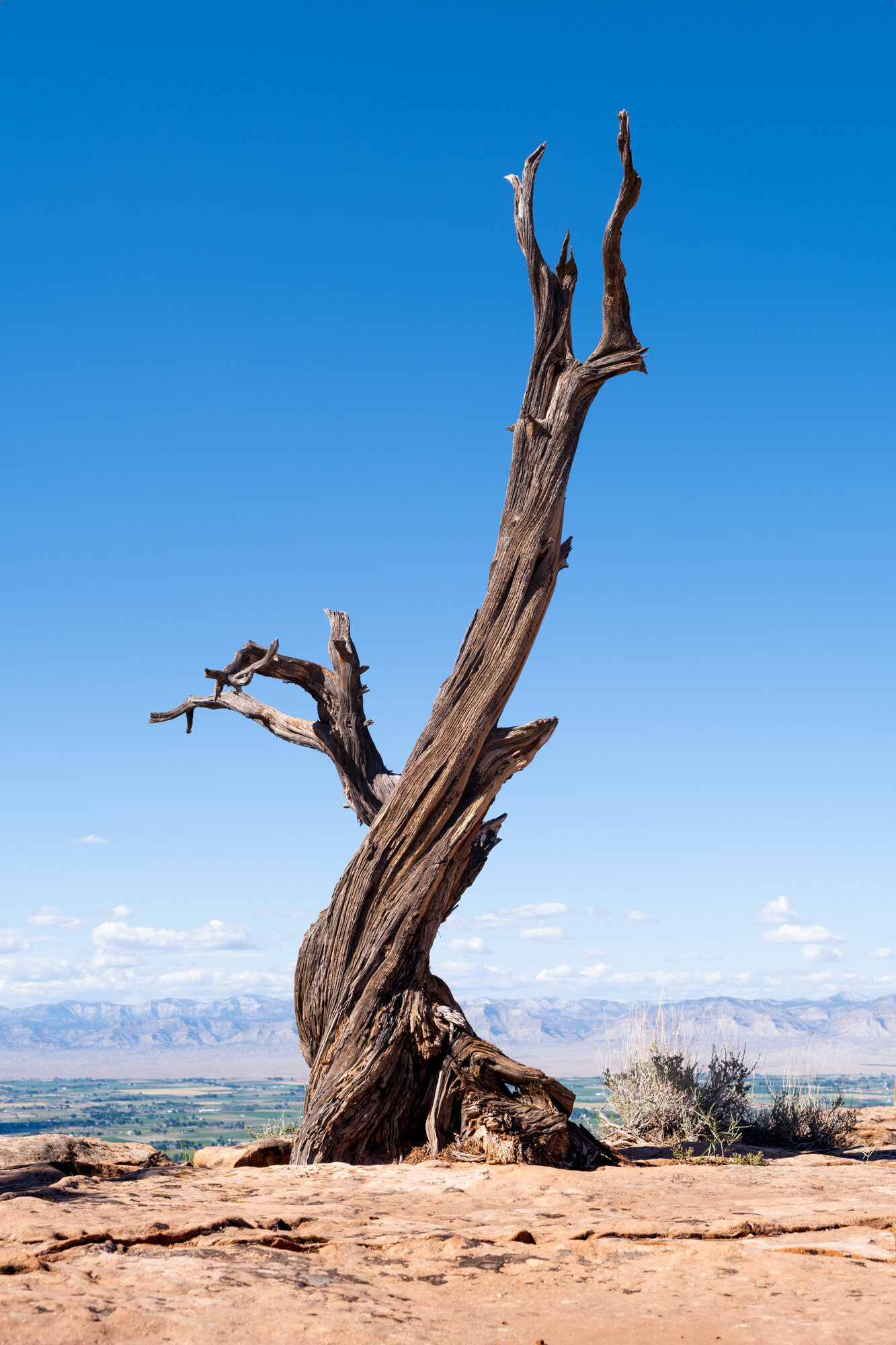2021 Michigan Trip - The Rocky Mountains and Mono Lake
The very last section of our birding trip was again back in the West, but this time a bit more south, focusing more on the Rockies and parts of Nevada. This time around, we were there more for the scenery because most of the birds we’d already seen at Mono Lake, though we did stop by there again. Throughout our western and southern travels, we were constantly being chased by multiple thunderstorms. In particular, one of our birding spots in Colorado involved us having to go on a hike that we had to be done with before noon, or it would start raining on us. Still, it was stunning, especially in the montane and alpine areas, where you could see sharp crags and rocky hills for miles in the distance.
When hiking up a near 12,000-foot high mountain in Colorado (close to Baldy Cinco), we came across this Snowshoe Hare (Lepus americanus) near the trail. It quickly hopped away from us, but it was a massive rabbit, about the size of a small dog. This particular mountain was quite a hike, being a 1.5-mile slope up over rugged alpine terrain with temperatures being low enough for some snow to still exist, even in the middle of summer. Google maps told us that it was 2.8 miles, mostly flat, and would only take an hour to traverse. In reality, it took us almost two and a half hours to get up the first half of the hike, which was difficult enough being an over thousand-foot elevation climb. The elevation caused us to have to take a break to breathe every 15 steps or so because otherwise, you’d feel dizzy and light-headed. However, we did find this rabbit, a Brown-capped Rosy-Finch (Leucosticte australis), and a few other nice alpine birds. However, the hail was a bit of a detractor.
While hiking, we found a friendly family of Canada Jays of the bicolor subspecies (Perisoreus canadensis bicolor). Canada Jays are a bit famous for how confiding they can be, with many taking food from the hand. However, this group wasn’t that interested in us, but instead whatever was down the hill some ways. Because of this, I was only able to get this subpar photo of one of them.
The most exciting find for us on top of the mountain, aside from the rosy-finches, was a sizable number of American Pika (Ochotona princeps). Pikas were like the prairie dogs of the Rockies, constantly yelping and scurrying across the lichen-covered rocks to grab some plants for food. While I’ve been in many places where it is possible to see Pika, this is one of the few places where you are essentially guaranteed to see it, that is, if you are willing to hike a couple of hours up a mountain.
Back closer to the road, but still in alpine forests, were these tiny Least Chipmunks (Neotamias minimus) with extraordinarily long tails. They appeared to like to take partially bloomed flowers and consuming them in broad daylight. It seems like this might be a problem if there were any raptors around, but we didn’t hear or see any.
Though there are many different squirrel and chipmunks species, they seem to all like munching down on the flowers of plants. This Golden-mantled Ground-squirrel (Callospermophilus lateralis) was exceptionally content with its food, barely moving even as my mom approached within a foot of it.
A Barn Swallow (Hirundo rustica) sitting on a nest. This particular nest was in the eaves of the visitor center at Great Basin National Park. Because this bird was incubating eggs, or at least, sitting on the nest, most likely, this would be a second brood.
Here is the other bird of the pair, sitting on a nearby peg.
Here we have a very perturbed Blue-gray Gnatcatcher (Polioptila caerulea amoenissima), a bird that has both the voice and temperament of an asthmatic wren. They are a key bird of dry habitats in the Western US, and this particular individual was found right next to a canyon in Colorado National Monument. However, in the Eastern US, under a different subspecies, this bird prefers wooded habitats.
In the aforementioned canyon were lots of holes in the cliff that were used by White-throated Swifts (Aeronautes saxatalis) as very precarious nests. Though bearing a very close physical resemblance to swallows, swifts are actually much more closely related to hummingbirds. Hence the long sharp wings, except one of them evolved to glide and the other to indulge in a sugar-driven wing-madness that is hummingbird flight.
Of course, on every rock, there was a precariously placed lizard that would scurry away at your every footstep, except this one was trapped against a cliff edge, so I was able to get some good photos of it.
On our last trip to high desert in New Mexico, we also found a robberfly eating something, though the last time, it had been a grasshopper. This time, it was a moth. Robberflies look like a cross between a spider and a dragonfly, creating an animal that looks like it shouldn’t really be a carnivore but rather something more petlike.
A landscape shot from the monument. It bears a stark resemblance to Grand Canyon, but I prefer this location more because it has many fewer people.
And another one, this time just of a tree.
The orange face of sunset, staring down on the red cliffs below.
Near Mono Lake, a hotel of sorts called Virginia Lakes Resort had two bird feeders up that attracted a variety of wildlife, including this Mule Deer (Odocoileus hemionus), though it didn’t eat off the feeder. I’m not sure why, but this one has a collar on its neck.
Douglas Squirrels (Tamiasciurus douglasii) especially enjoyed the bird feeder, with this one earlier stretching its legs off a pole just to put its front limbs on the feeder for some nuts.
Here is a different one by the name of Belding’s Ground Squirrel (Urocitellus beldingi), this time with Cassin’s Finches (Haemorhous cassinii) and Gray-crowned Rosy-Finches (Leucosticte tephrocotis) in the background.
Here is another individual of the same species, looking at me rather concernedly.
A White-crowned Sparrow (Zonotrichia leucophrys) with a mouthful of grubs to take off to its nestlings. Being a parent can be challenging, and I’m not really sure how this bird managed to catch another worm with one already in its beak.
The real reason we went back to Mono was to see Gray-crowned Rosy-Finches, which we didn’t have time to see the first time through. This species of rosy-finch is the most widespread, but it was the last one we needed to see to have seen all three rosy-finch species on this trip. We got Black Rosy-Finch (Leucosticte atrata) slightly North of Yellowstone, Brown-capped Rosy-Finch (Leucosticte australis) where we saw the Pikas, and finally this bird at Mono to finish off the triumvirate. Of course, there is still Asian Rosy-Finch (Leucosticte arctoa), but that’s a whole trip in and of itself. Counting the other species in the genus, Plain Mountain Finch (Leucosticte nemoricola) and Brandt’s Mountain Finch (Leucosticte brandti), this gets more complicated. However, both of those are also in Asia, so technically, I can say I’ve seen all the American rosy-finches.
Finding my last rosy-finch, near an area where we originally started our journey, was a nice treat and conclusion to our trip. It had been almost a month since we were previously in the Mono Lake area, but it had changed dramatically upon our last visit. With summer in full swing, the snow-capped mountains were mostly barren, and thunderstorms threatened our every move.
During this journey, I got to see many of my target birds, some easily, others with great effort and coaxing of my family to wake up far earlier than they wanted and drive much more than they probably should’ve. While I did go on a road trip back in 2016 across the US and back, this was my first one specifically for birding. Even so, the variety of landscapes and climates while traveling these past few weeks has been incredible. I will never forget the sunrise over the grasslands of the Dakotas or the whispering hints of greenish yellow light from the fireflies in Arkansas. From the 10k+ elevation alpine hikes, amongst aquamarine blue skies and colorful flowers, to the barren landscape and sagebrush desert of the Great Basin. All in all, it was a splendid trip, and while I didn’t see all my target birds, there’s always the future!
This blog post marks the end of the 2021 Michigan Trip. Please come back for future posts about local birds and other birding-related travels.



















